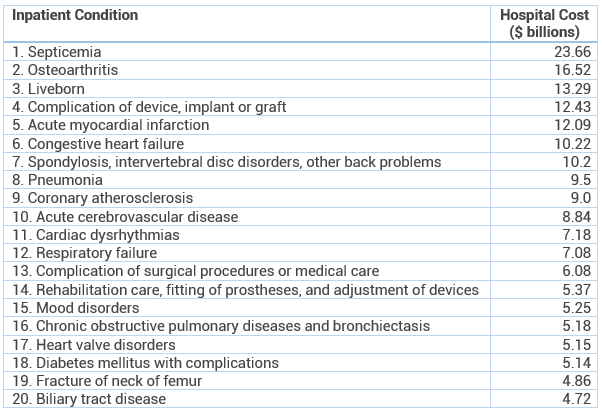It’s been eight months since the implementation of ICD-10. It appears the sky has not fallen. Coder productivity as expected has slowed, but is showing signs of improvement. In a recent AHIMA survey conducted in early May approximately 68% of the 156 coding professionals who responded reported that there was a decrease in productivity. 26% of respondents reported that they perceived no change in productivity and 6 percent actually reported an increase in productivity.
However, increasing productivity is only part of the overall goal, as coders continue to become more efficient during this transitional year to ICD-10, it is important for coders to strive for the highest degree of accuracy and compliance as possible, especially for the high cost DRGs which carry the highest audit risk. Becker’s published a list of the 20 most costly DRGs according to a statistical brief from the Healthcare Cost and Utilization Project using data from 2013 (see table below).
Sepsis currently tops the list as the costliest inpatient condition which almost guarantees increased audit risk for hospitals. It is important for your coders to stay educated to ensure their coding practices follow the latest coding guidance and are in line with current clinical practices, especially now that the criteria for sepsis and septic shock has been redefined. It will be interesting to see what the data reveals about the highest cost ICD-10 DRGs when compared to ICD-9 DRGs. Based on our auditing results thus far, it appears that the top 20 will remain consistent with the 2013 data.
Your coding department should become very familiar with its specific case mix by running reports on at least a quarterly basis to evaluate for high cost and high volume DRGs. Internal and external coding audits should include a large percentage of high cost and high volume DRGs as well as a smaller portion of charts selected at random. Provident has gained deep insights into what drives DRGs in this post-ICD-9 world. We can help you design an inpatient auditing program that will optimize revenue capture and minimize audit risk.

Source: http://www.beckershospitalreview.com/finance/20-most-costly-inpatient-conditions-june14.html
